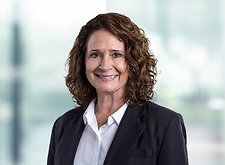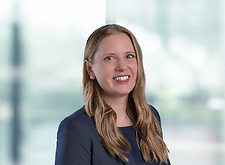What is the $349 Billion Paycheck Protection Program?
The Coronavirus Aid, Relief, and Economic Security, or “CARES Act” was signed into law on Friday, March 27, 2020. Among the programs in the Act is “Paycheck Protection Program”, which is a $349 billion boost to the existing Small Business Administration (SBA) loan guaranty program.
How does the program work? – The Paycheck Protection Program, found in Title I of the Act, is a $349 billion boost to the SBA’s existing 7(a) guaranty program. These are NOT loans from the Federal Government. Instead, the Federal Government guarantees loans made by eligible lenders to eligible borrowers. The Paycheck Protection Program also expands eligibility for, and liberalizes other requirements of, the SBA 7(a) guaranty program. Perhaps most notably, the Act sets forth the possibility for these loans to be forgiven under certain circumstances.
Who is eligible? – Businesses or non-profits with 500 or fewer employees (with certain exceptions, discussed below) are eligible for guaranteed loans under the Act. The number of employees is considered on an affiliated-company basis, such that all businesses under common control would count employees in the aggregate. The affiliation rule is waived for businesses in the hospitality/restaurant businesses (within NAICS code 72), franchises, and recipients of Small Business Investment Company (SBIC) investment. Note that the 500 employee cap can be exceeded for certain excepted industries. (See this link for a current table of industries and employee standards.)
Is there a net income limitation? – No. Borrowers must make a good faith certification that the loan is necessary due to the uncertainty of current economic conditions caused by COVID-19 and that the funds will be used to retain workers, and maintain payroll, or make mortgage payments, lease payment and utility payments.
How much money can be borrowed? – The maximum loan amount is 2.5 times the Borrower’s average total monthly payroll costs, not to exceed $10 million. Note that under the Act, “payroll costs” include health care benefits, vacation, family and sick leave, retirement benefits and other additional similar costs but exclude compensation of employees with salaries in excess of $100,000 per year.
What can I use the loan proceeds for? – Proceeds of the loans can be used for payroll and payroll support (including paid sick or medical leave), rent and utility payments, insurance premiums and interest payments on other debt.
How can my loan be forgiven? – Borrowers would be eligible for loan forgiveness in an amount equal to the sum spent for the 8 weeks after the loan origination date on (i) payroll costs (excluding employees with compensation in excess of $100,000 per year); (ii) group healthcare benefit costs and insurance premiums; (iii) interest payment on any mortgage incurred before 02/15/2020; (iv) rent on any lease in force before 02/15/2020; and (v) utilities for which service began before 02/15/2020.
The amount of loan forgiveness shall be reduced proportionately by (i) the number of employees during the covered period as compared to either the prior year or January and February 2020; and (ii) any reductions in salary in excess of 25% of an employee’s total salary or wages as compared to the last quarter that the employee was employed. There are exemptions for such reductions (aka, forgiveness is still available) if the employer re-hires its employees or re-instates salaries not later than June 30, 2020.
Notably, for US Federal tax purposes, forgiven amounts will not be taxable cancellation of indebtedness income.
What happens to loan amounts not forgiven? – Any portion of the loan not forgiven will have a maximum term of 10 years, and the interest rate cannot exceed 4%. The balance of the loan will continue to be guaranteed by the SBA.
Do I have to make payments right away? – No. The Act states that payments on these loans will be deferred for 6-12 months. The SBA is expected to issue guidance on this deferral program.
Do I need to provide collateral or a guaranty? – Certain lenders could require collateral or a guaranty, but they are not required to obtain the SBA guaranty.
What do I do now? – Call your financial institution to get the process started. If your lender is not an SBA-approved lender, your local SBA District Office can provide a list of approved lenders. See this link to find the district office closest to your location.
Hodgson Russ remains on top of these circumstances as they develop. Our attorneys are working remotely, and ready, willing, and able to address the needs of our clients, so do not hesitate to contact us (attorney directory).
Featured
- Partner
- Partner
- Senior Associate
- New York City Office Managing Partner
- Senior Associate
- Partner
- Partner







